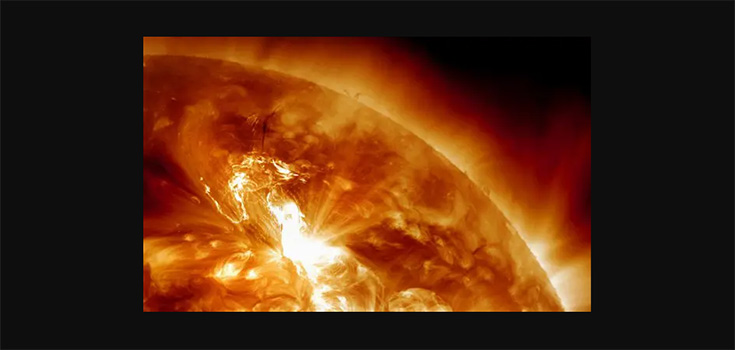Mega Solar Eruption Strikes Earth as Predicted by NASA

As we reported late yesterday night, a powerful solar storm was expected to affect earth with a focused stream of charged particles around 9 A.M. EST. As predicted by NASA officials, the storm has hit earth and is continuining to exhibit effects. Amazingly, the sun is still in the process of bombarding the Earth with heavy levels of electromagneitc radiation. The storm is the biggest to hit the Earth in 6 years, and more is still on the way from the fast-moving eruption.
Occurring at 11 P.M. EST on Sunday, the solar flare’s full effects will be observed in 3 different instances on Earth all appearing at different times. According to the National Oceanic and Atmospheric Administration’s Space Weather Prediction Center in Colorado, the biggest issue is radiation. Expert space weather center physicist Doug Biesecker says that the radiation is mostly a concern for satellite function and astronauts in space who could be affected by the electromagnetic radiation. It could also pose a communications challenge for polar-traveling airplanes.
The radiation emitted from the flare will continue through Wednesday, with levels considered to be quite strong. According to NOAA’s storm scale, higher levels of radiation include ‘severe and extreme’, making the flare’s radiation effects concerning yet not ‘severe’ or ‘extreme’. The storm is still the strongest since May 2005. The radiation came flying towards the earth at 93 million miles per hour in the form of protons.
The reason for the lasting effects has to do with these protons:
“The whole volume of space between here and Jupiter is just filled with protons and you just don’t get rid of them like that,” Biesecker said. That’s why the effects will stick around for a couple days.
The radiation hot spots from the storm can actually be tracked via a map provided by the National Weather Service’s Space Weather Prediction Center, which shows the solar radiation touching the upper atmosphere in the Earth’s poles:

Currently in Solar Cycle 24, today’s storm follows a pattern of intensified solar activity that began in 2008.
